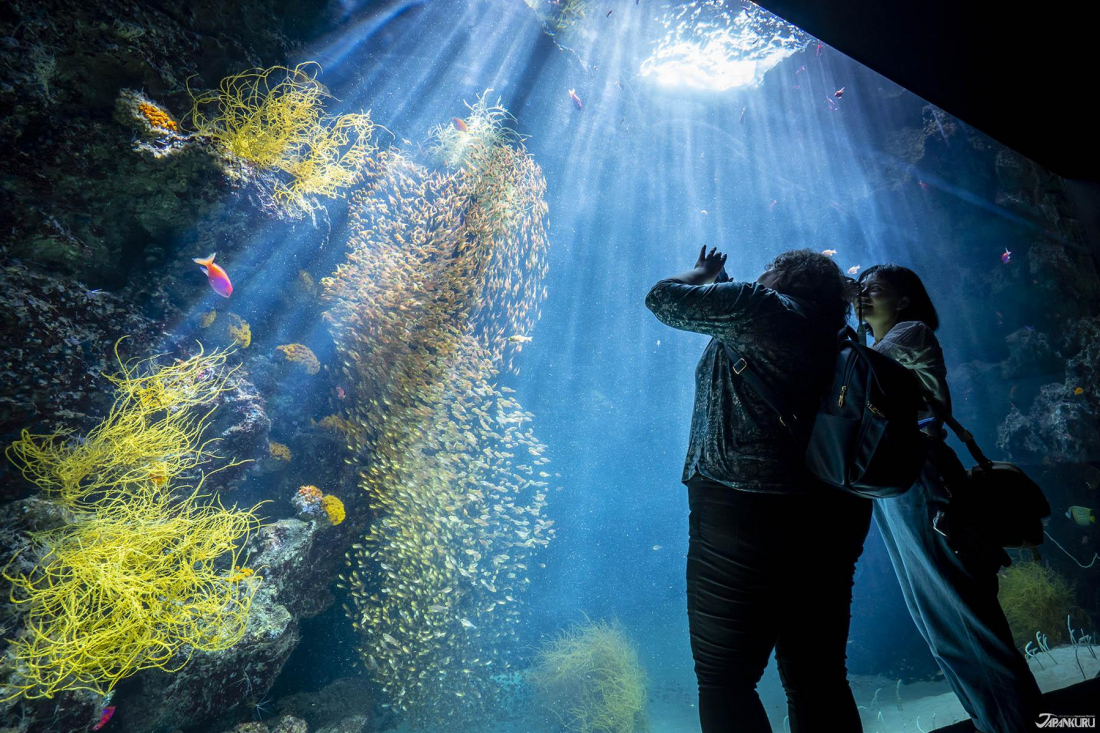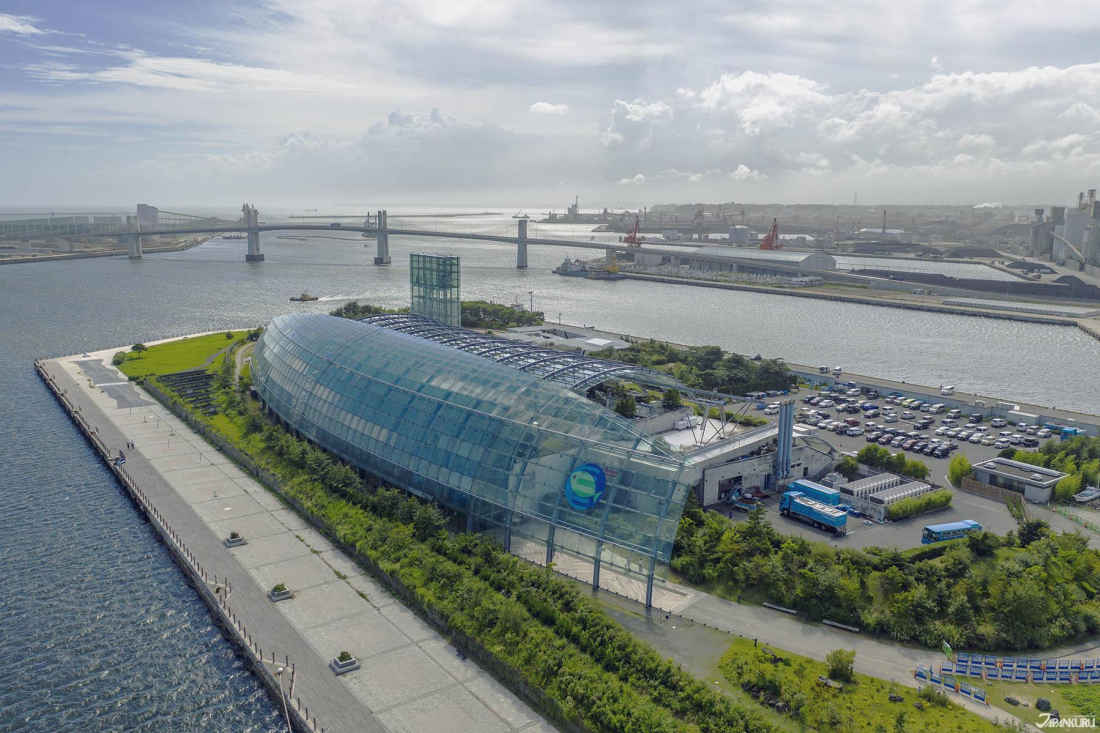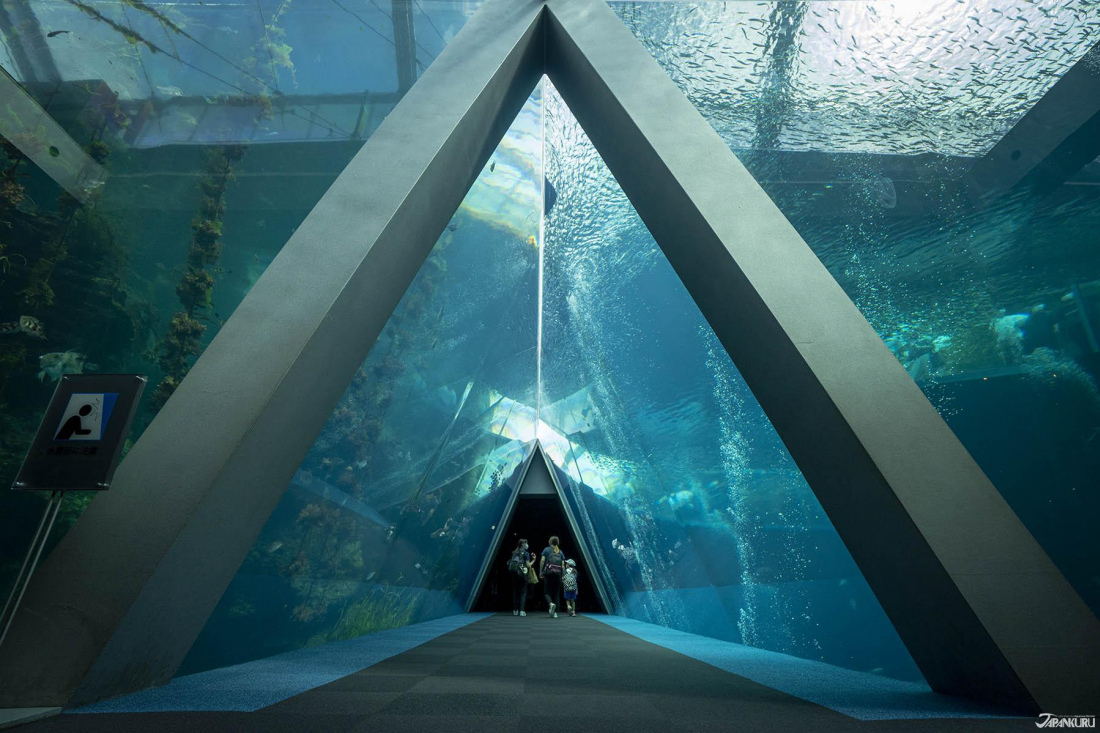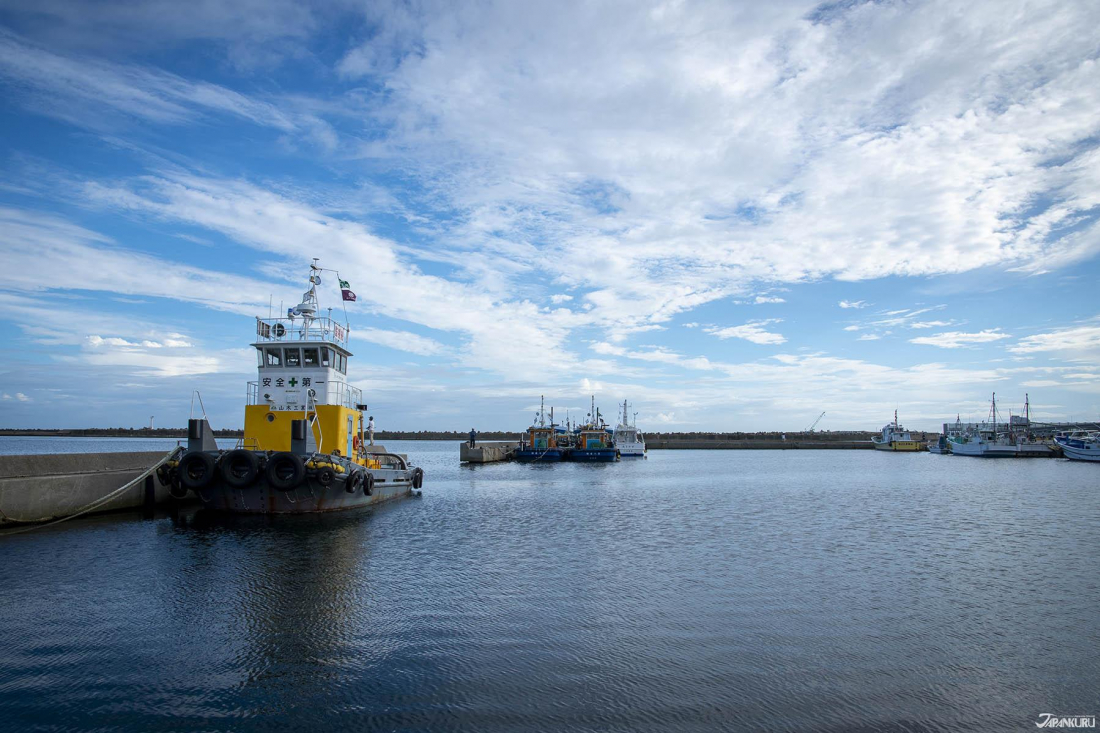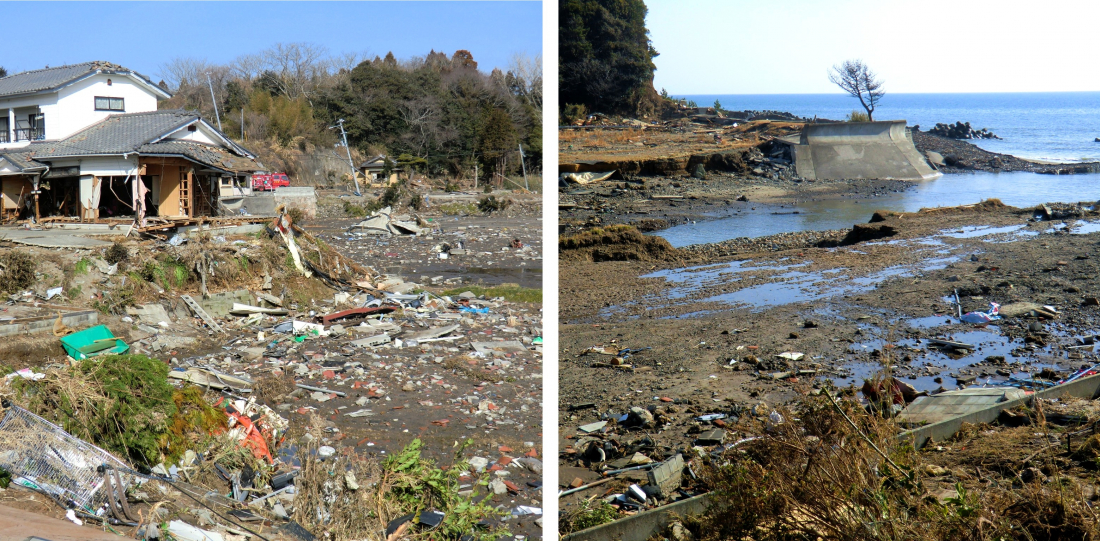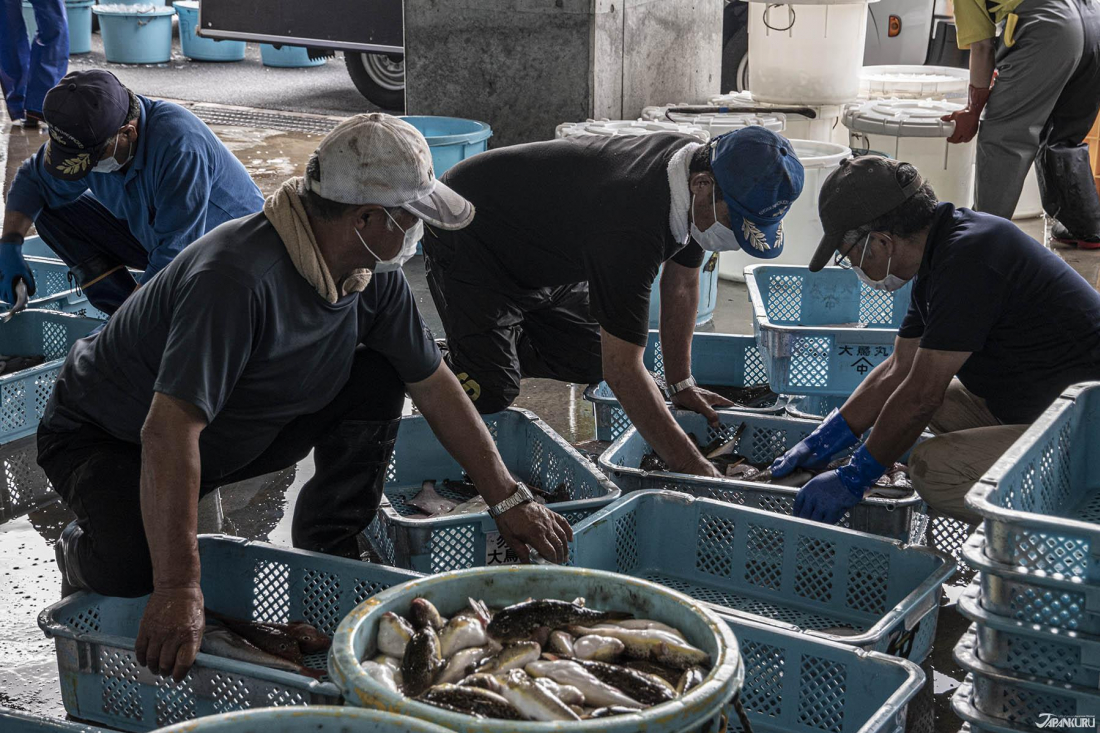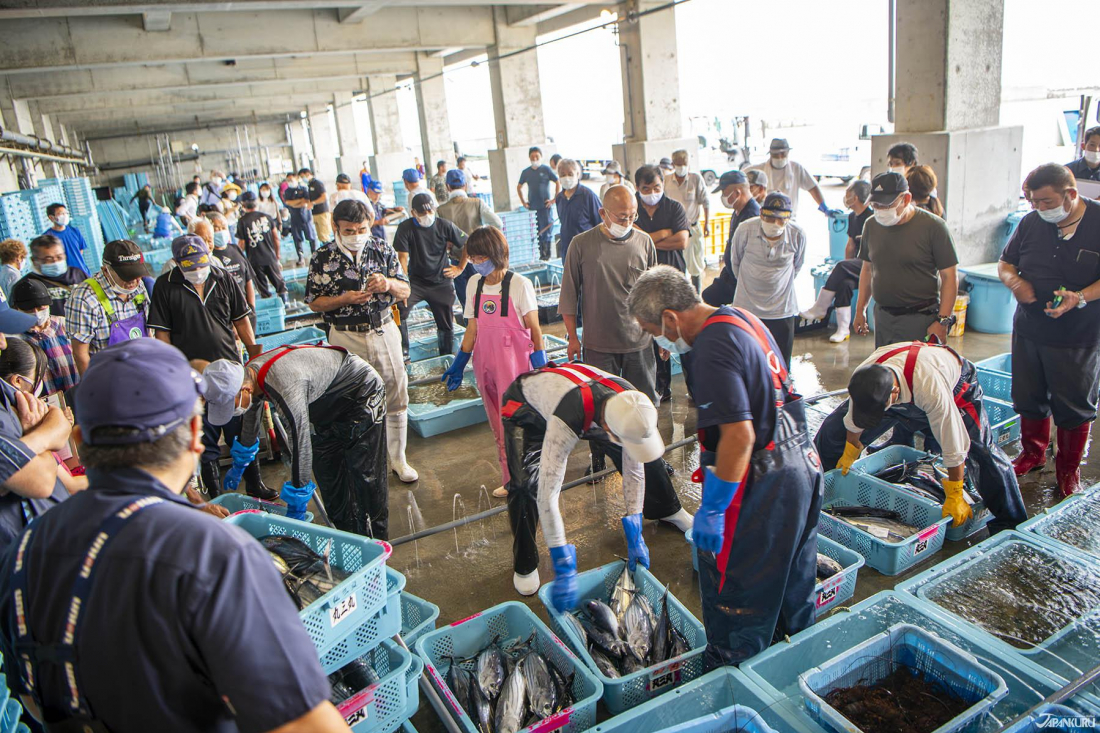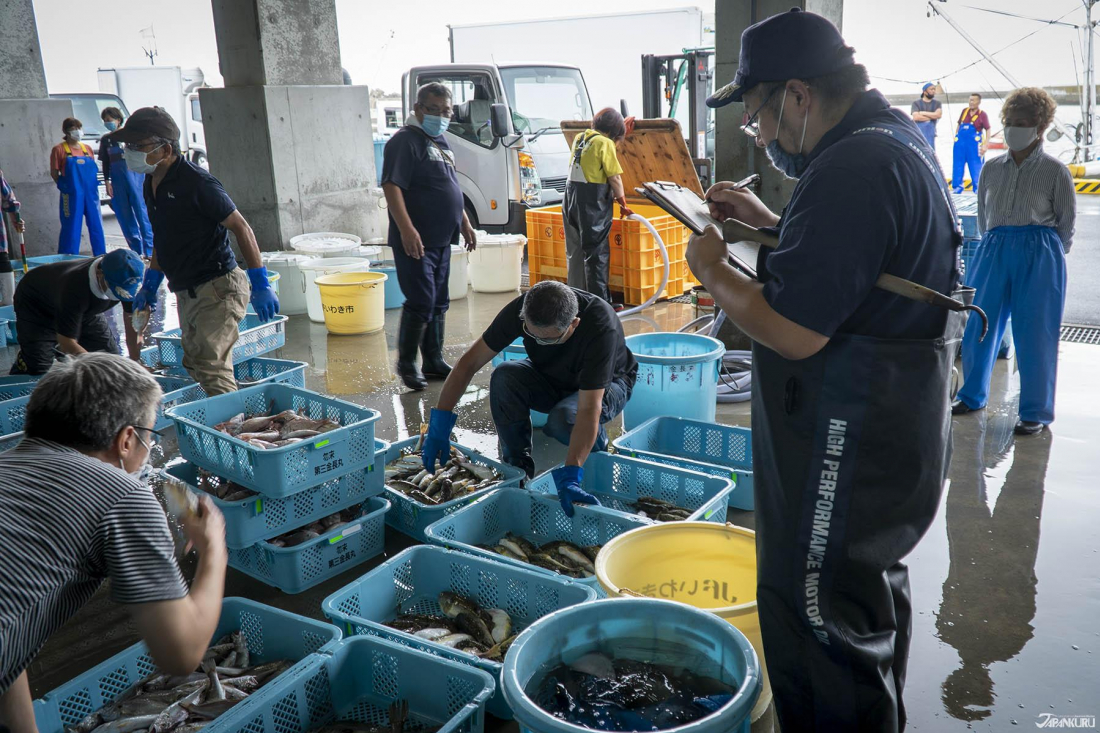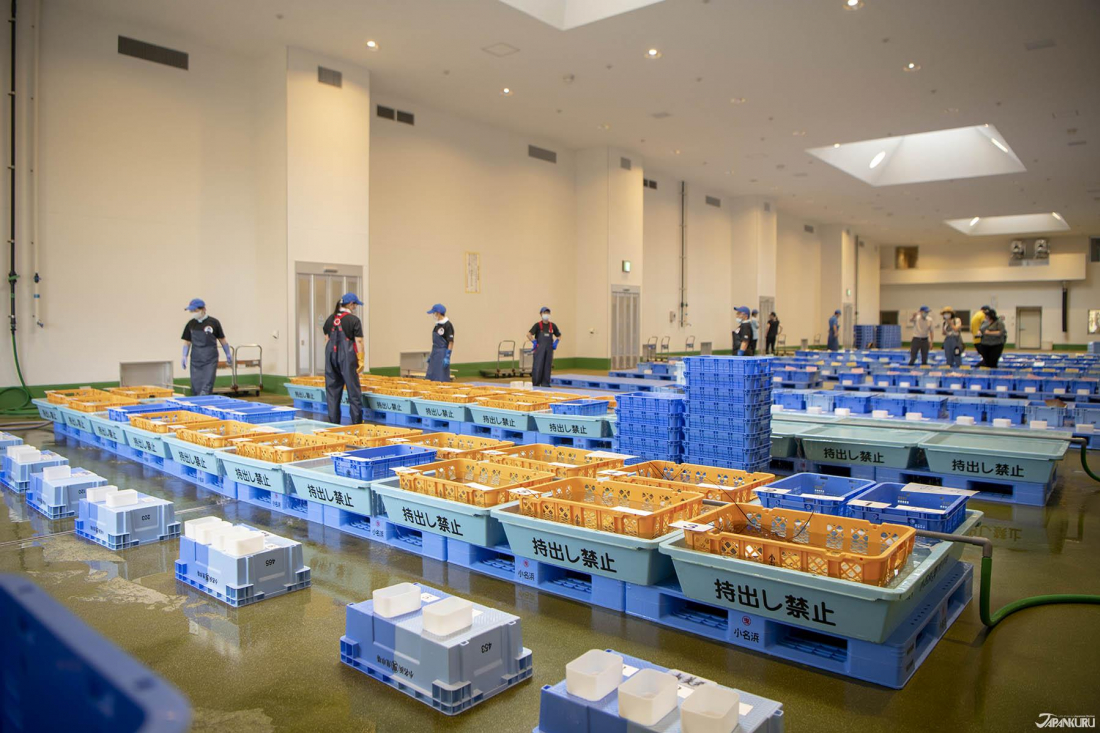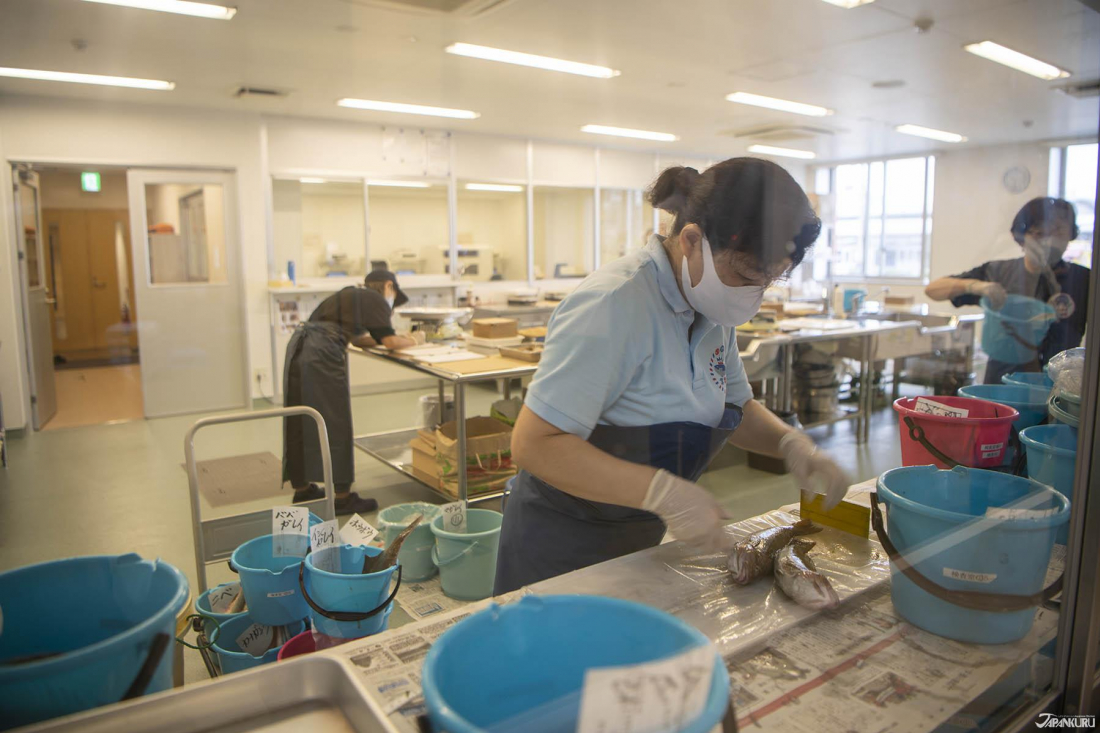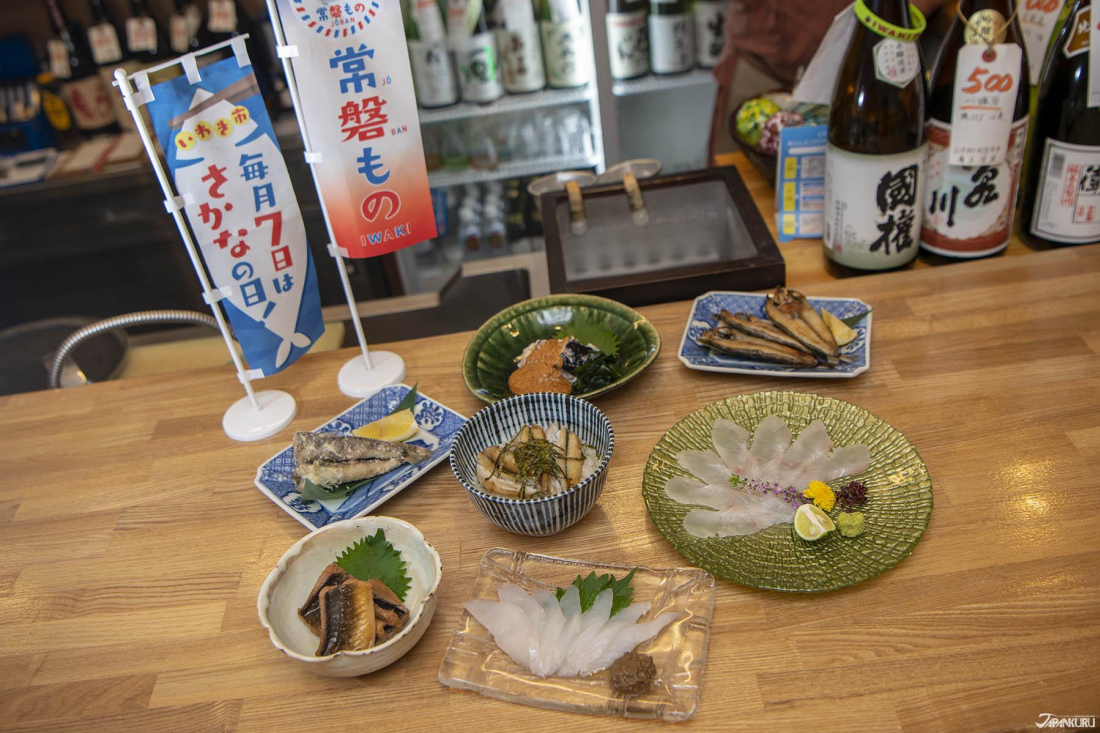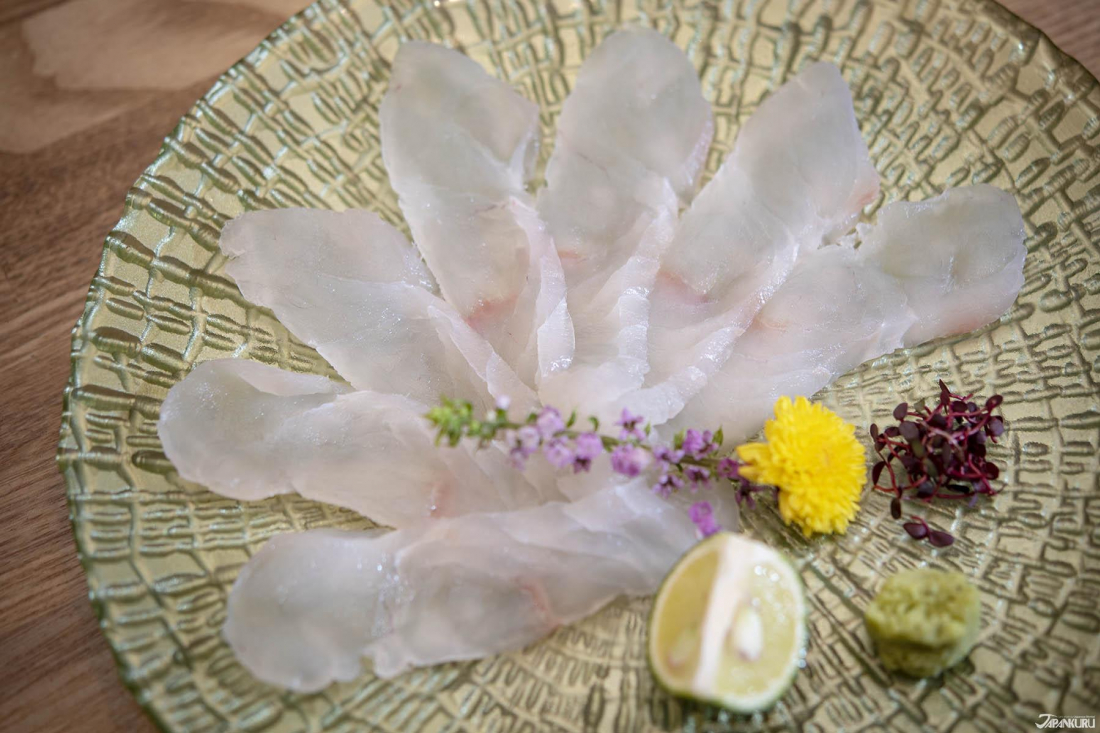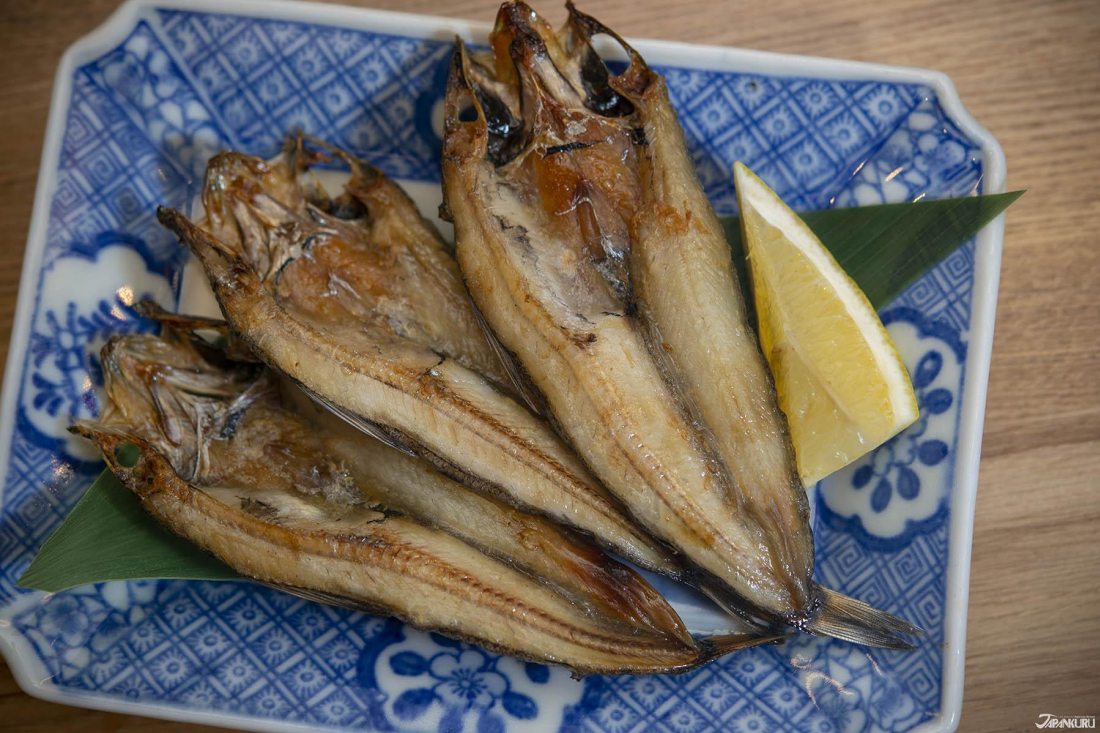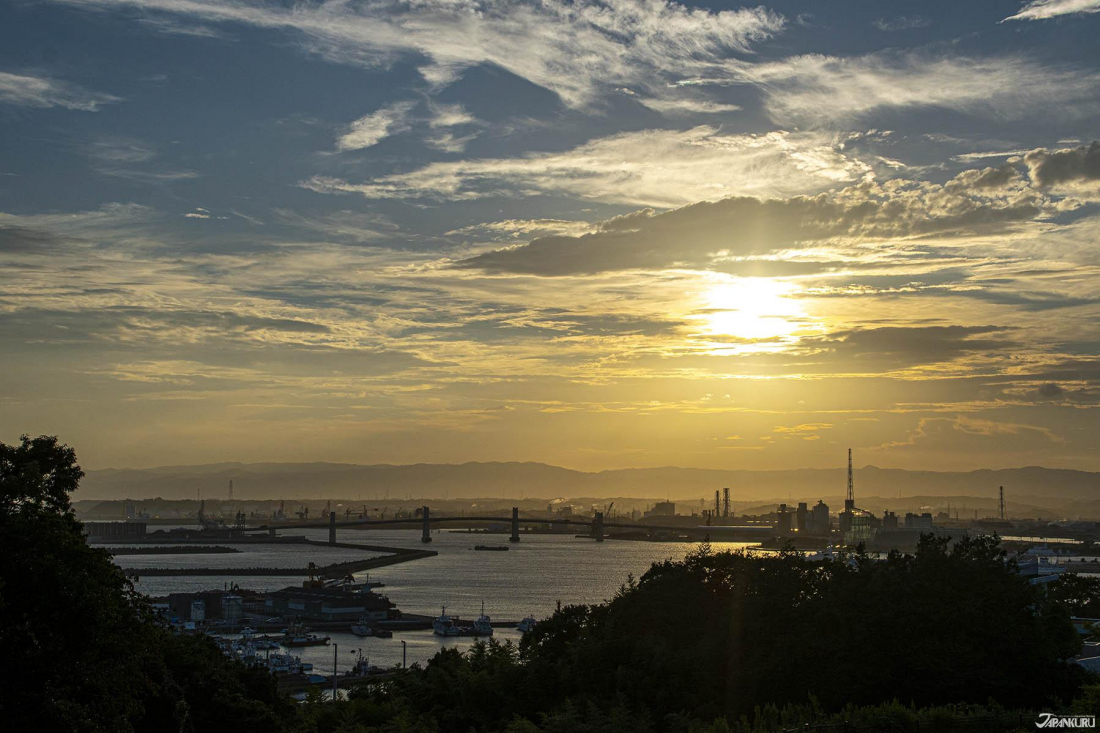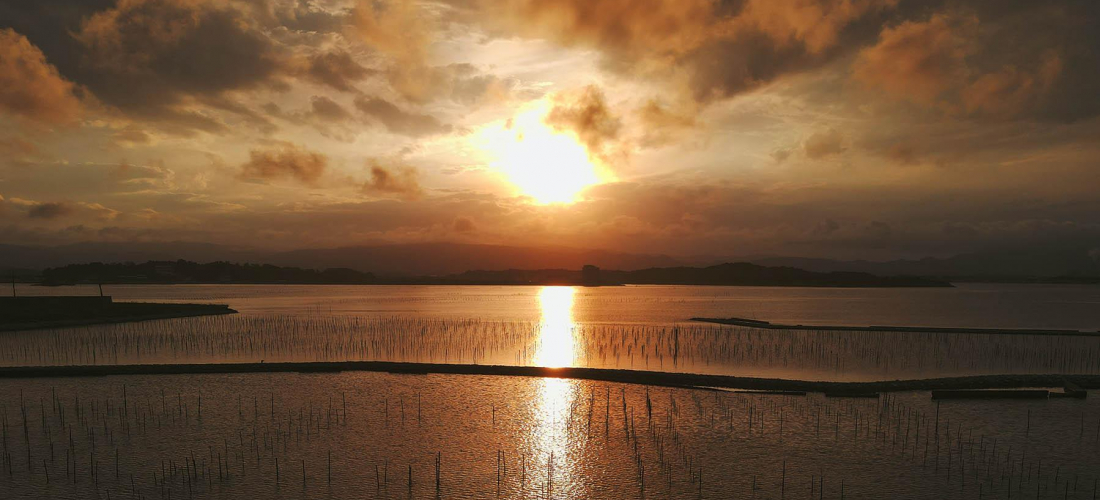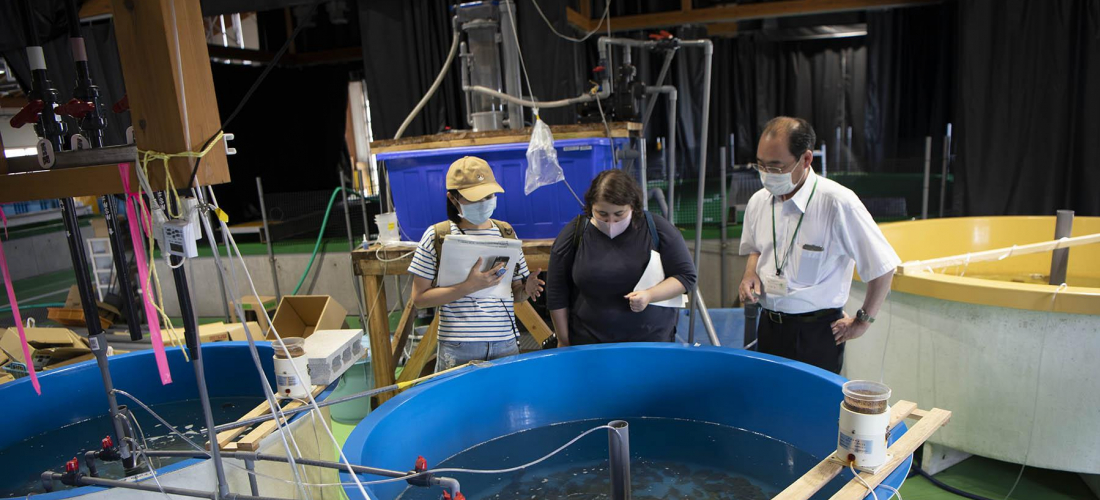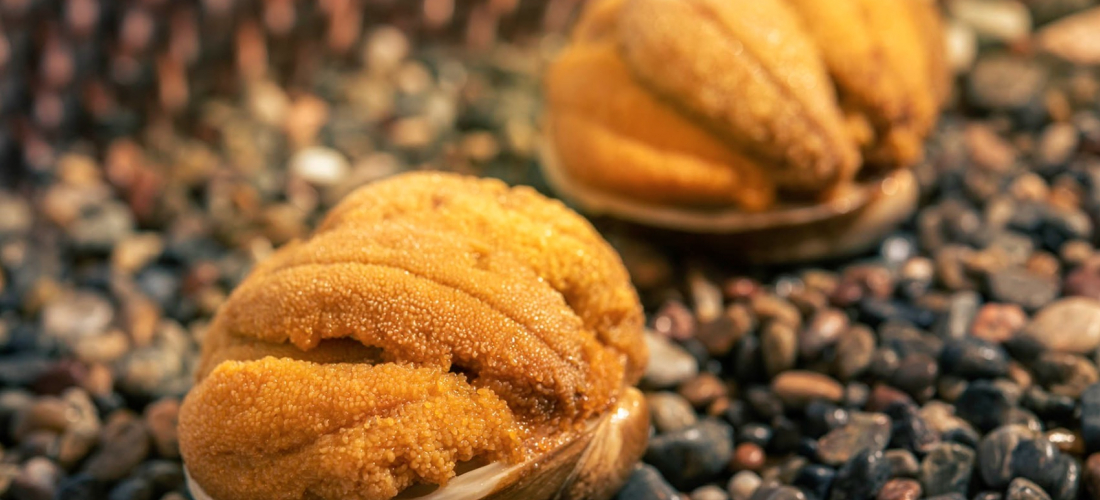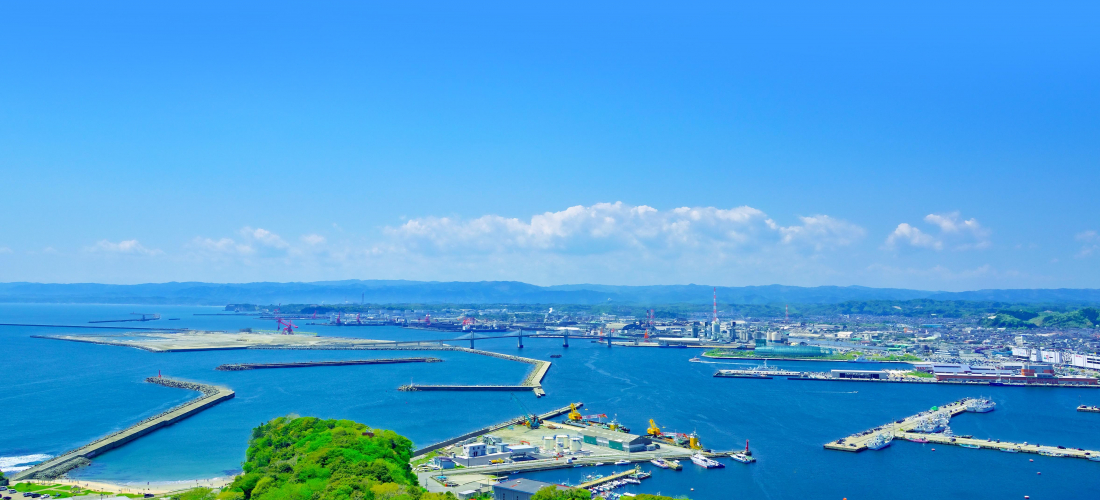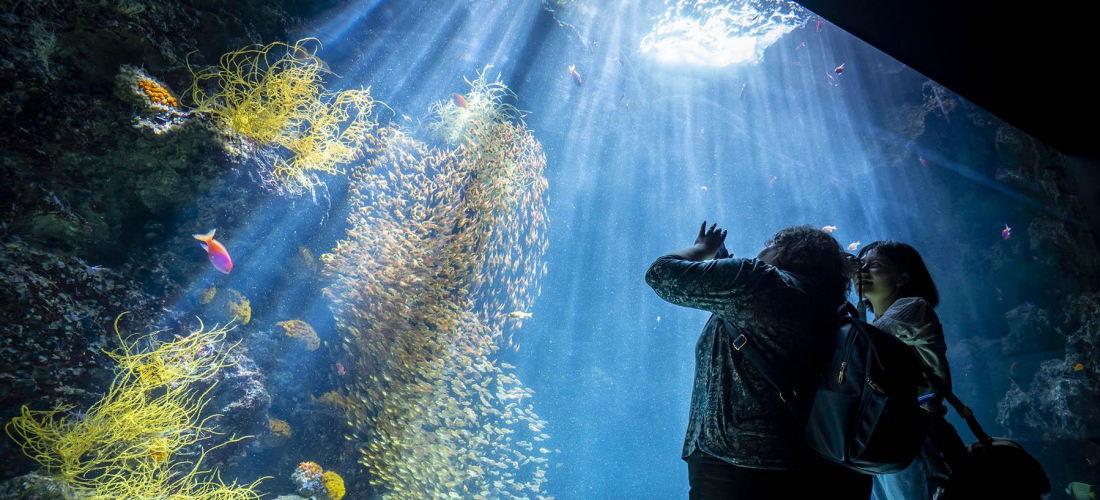
CONTENTS
Fishing and marine life are a deeply ingrained part of the culture in Fukushima’s city of Iwaki, still bringing life and color to the seaside city.
The Fish of Iwaki
The City of Iwaki has an interesting history dotted with everything from dinosaurs to coal mining, and even hula dancing, but thanks to the vast warm and cold ocean currents that meet off the coast of Fukushima, life in Iwaki has always been tied to the sea and the fish swimming within. Joban-mono seafood, found throughout the local waters, is serious business for the community, and the daily catch provides a collection of delicacies that make their way into both weeknight family dinners and fine dining. While the March 2011 Tohoku earthquake and tsunami brought changes to the way locals deal with the marine life, from restrictions to increasingly stringent safety testing, even these struggles have never severed the connection that Iwaki has with the ocean.
Travelers curious about local marine life, however, might be interested in seeing what the creatures look like before getting scooped up by fishing boats, and fortunately Aquamarine Fukushima is the perfect place for that! As a first step before diving into the deep end of Iwaki fisheries, the Japankuru team stopped by the aquarium to take a look at the local wildlife.
Aquamarine Fukushima aims to teach visitors all about "the oceans and what they say about our future on earth," by recreating natural environments within the large complex. Of particular note is their area dedicated to the oceans off Fukushima and local marine life. Not only do smaller tanks and informational signs show off some of the region's more iconic creatures, but the aquarium's uniquely-shaped tunnel (an upside-down V) makes it easy to imagine the real Oyashio and Kuroshio ocean currents meeting in the water nearby. Walking through the huge fish tank, visitors find themselves in the space that represents the "shiome" (潮目) meeting point, and both sides of the tank represent different ocean habitats: swift fish power through the Kuroshio waters, and a more diverse cast takes residence in the Oyashio area, all a part of the real Iwaki habitat.
Fishing on the Shores of Fukushima
Despite the beauty of the local aquarium, fish clearly aren't just entertainment in Iwaki. The local fishery business is a major part of life along the seashore in Fukushima, providing work for the community, and food for seafood lovers across the country. The region's seafood is called Joban-mono, and for decades the term has been an immediate sign of high-quality for chefs shopping at Tokyo's Toyosu Fish Market (formerly Tsukiji) and proficient home-cooks throughout Japan. The area has been a reliable and abundant fishing ground for as long as anyone can remember.
But, of course, the 2011 Tohoku earthquake and tsunami brought many changes to Fukushima, the fishing industry included. After we'd found out about the excellent reputation of Joban-mono, the Japankuru team was determined to learn more. We toured our way through local fish markets and testing centers of all kinds, looking for answers concerning safety checks and practicality, but also learning a little more about why Iwaki is so proud of its fisheries in the first place.
What most people know about March 2011 is that a massive earthquake and tsunami hit Fukushima, taking the lives of many local residents and causing real destruction along the way. Neighborhoods were wiped out, and the names of cities along the Fukushima coast were repeated in concerned tones all over the world. Not only that, but the disaster left behind radioactive material, leaving many worried that food produced locally would be dangerous to eat for the foreseeable future. It's easy to see that the whole event left some people, in and outside of Japan, with a vague sense of concern upon hearing the name Fukushima, even today.
What the general public is less aware of, especially in parts of the world far from the shores of Iwaki, is that locals are hard at work restoring local agriculture, including the fishing industry, and doing so at even more stringent safety standards than just about anywhere else. Thanks to the vastness of the open sea, local monitoring centers have plenty of evidence that radiation levels in Fukushima's harbors and fishing grounds balanced out to reasonable levels fairly soon after the earthquake, but safety checks still aren't taken lightly in Iwaki. From seawater and seafloor monitoring, to radiation checks on all varieties of fish caught nearby, Iwaki's local catch is tested and analyzed every single day. It's easy to be skeptical from afar, but Fukushima radiation testing centers of all kinds actually make their data publicly available―they want people to see the numbers for themselves!
Everyday Life in Iwaki’s Fish Markets
The fishers of Iwaki head to work in the small hours of the morning, spending dawn out on small fishing boats floating on the open sea. Some fish are caught in trawl nets skimming the ocean floor, and others are caught using vertical gillnets, and all are brought back to the harbor in time to be sorted and sold at hours that are still early for your average office worker. At Iwaki's Numanouchi Fish Market, sales start at 8:30 in the morning, when wholesale bidders scratch out their prices on slips of paper, and toss them on top of the bins of fresh fish.
Even with the local fishing industry still rebuilding, operating at about 1/3 the capacity of before the earthquake, dozens of varieties of fresh fish and seafood are piled up throughout the open market building every morning, from common favorites to more rare delicacies. Fishermen told us that local katsuo (bonito or skipjack tuna) numbers had been waning due to warming waters, but we still saw plenty of the uniquely striped fish, alongside huge buckets of smaller fish, trays of flounder, and spiny lobsters poking their legs out of their bins of shallow water.
Before all the fish are sold off, though, safety checks take priority above all else. The City of Iwaki has more than one wholesale fish market, and the local testing center is inside Onahama Fish Market, a ways south of Numanouchi. Since fishing boats can bring in slightly different fish every day, the various fish markets are in contact first thing in the morning, to make sure that the testing center tests every single species brought into harbor that day. Even if a fish is so rare that only one is caught, that one fish has to be sent off for safety testing, instead of being sold at market. And while these days the testing shows low radiation levels, in the rare case of numbers even a little bit higher than normal, the fish are immediately recalled and carefully investigated by researchers.
Already reaching the end of a long day of intense ocean fishing by mid-morning, the many fishers and fishmarket workers in Numanouchi and Onahama looked understandably exhausted by the time they were packing up, but when asked about their work they perked up. "At the fish markets in Tokyo they've always said that the freshness of Joban-mono seafood is really top notch," says Iwaki Fisheries Cooperative Association Vice-President Mitsunori Suzuki, a man who has clearly spent his fair share of days in the sun and the sea, "especially our eels, flatfish, greeneyes, and of course katsuo." While he notes that many things have changed since the 2011 Tohoku earthquake, and that they had plenty of trouble directly after the disaster, he adds "these days we carefully monitor all the fish on the spot, so I don't think you'll find safer seafood anywhere in Japan. No other prefecture does such serious testing." Even aside from radiation testing, Suzuki explains that local fishery associations have resolved to use this time of regrowth as an opportunity to improve practices of all kinds, and keep local fisheries sustainable. Going into the future, they now have goals to maintain a balance with the environment as local business grows. "So," the vice-president concludes, "I truly think this is great fish, and we put a lot of work into ensuring its quality and safety before offering it to the public." And finally, with gruff enthusiasm, "please do give Fukushima's fish a try!"
A Taste of Iwaki Cuisine
Finally ready to see what all the fuss was about, the Japankuru team headed to a small restaurant called Shuen Teru (酒縁てる), which serves dishes made with local Iwaki seafood, and pairs them with a collection of sakes brewed around Fukushima. We left the day's menu up to the restaurant's chefs, omakase-style, and received a whole variety of local delicacies prepared in just about every way possible. Starting with sashimi, the plates of thinly sliced hirame (ヒラメ, flounder) and matodai (マトウダイ, called John Dory) were fresh and delicate, and served with a number of sauces: sudachi citrus juice and soy sauce laced with aromatic chrysanthemum and shiso flower petals for the hirame, miso for the matodai. Greeneye is actually the official fish of Iwaki, so we were excited to try it in all kinds of preparations. Deep-fried whole the small fish were flakey and decadent, whereas the ichiyaboshi (一夜干し) salted and dried greeneye had an intensely concentrated umami, made even more delicious when served over ochazuke green tea rice. The locally-caught eel was stewed in a sweet and savory broth, bringing out the sweet flavor of the meat itself, and the final dish took advantage of the unique texture of monkfish skin for a dish with a mouthfeel totally new to our group. It was a true feast of Iwaki cuisine!
A City of Ocean Views
The long coastline bordering Iwaki has certainly brought the city its share of troubles, but it also brings the community business, great food, and of course beautiful scenery. With every cheery fisher steering their boat back into harbor loaded with fish to sell at market, and every staff member at the many testing facilities preparing samples and carefully charting data to make sure the fish is safe to eat, it's clear to see that the citizens of Iwaki are working hard to keep the industry alive, and share their love of Joban-mono with everyone they can.
For more on the seafood of Fukushima, and many more details on the ins and outs of Fukushima's ocean monitoring and seafood testing, keep an eye out for more Joban-mono articles coming soon! And if you'd like more updates and info from Japan, follow us on twitter, instagram, and facebook!
Details
NAME:Iwaki, Fukushima (福島県いわき市)
COMMENT
FEATURED MEDIA
VIEW MORE 
A New Tokyo Animal Destination: Relax & Learn About the World’s Animals in Japan
#pr #japankuru #anitouch #anitouchtokyodome #capybara #capybaracafe #animalcafe #tokyotrip #japantrip #카피바라 #애니터치 #아이와가볼만한곳 #도쿄여행 #가족여행 #東京旅遊 #東京親子景點 #日本動物互動體驗 #水豚泡澡 #東京巨蛋城 #เที่ยวญี่ปุ่น2025 #ที่เที่ยวครอบครัว #สวนสัตว์ในร่ม #TokyoDomeCity #anitouchtokyodome

Shohei Ohtani Collab Developed Products & Other Japanese Drugstore Recommendations From Kowa
#pr #japankuru
#kowa #syncronkowa #japanshopping #preworkout #postworkout #tokyoshopping #japantrip #일본쇼핑 #일본이온음료 #오타니 #오타니쇼헤이 #코와 #興和 #日本必買 #日本旅遊 #運動補充能量 #運動飲品 #ช้อปปิ้งญี่ปุ่น #เครื่องดื่มออกกำลังกาย #นักกีฬา #ผลิตภัณฑ์ญี่ปุ่น #อาหารเสริมญี่ปุ่น

도쿄 근교 당일치기 여행 추천! 작은 에도라 불리는 ‘가와고에’
세이부 ‘가와고에 패스(디지털)’ 하나면 편리하게 이동 + 가성비까지 완벽하게! 필름카메라 감성 가득한 레트로 거리 길거리 먹방부터 귀여움 끝판왕 핫플&포토 스폿까지 총집합!
Looking for day trips from Tokyo? Try Kawagoe, AKA Little Edo!
Use the SEIBU KAWAGOE PASS (Digital) for easy, affordable transportation!
Check out the historic streets of Kawagoe for some great street food and plenty of picturesque retro photo ops.
#pr #japankuru #도쿄근교여행 #가와고에 #가와고에패스 #세이부패스 #기모노체험 #가와고에여행 #도쿄여행코스 #도쿄근교당일치기 #세이부가와고에패스
#tokyotrip #kawagoe #tokyodaytrip #seibukawagoepass #kimono #japantrip

Hirakata Park, Osaka: Enjoy the Classic Japanese Theme Park Experience!
#pr #japankuru #hirakatapark #amusementpark #japantrip #osakatrip #familytrip #rollercoaster #retrôvibes #枚方公園 #大阪旅遊 #關西私房景點 #日本親子旅行 #日本遊樂園 #木造雲霄飛車 #히라카타파크 #สวนสนุกฮิราคาตะพาร์ค

🍵Love Matcha? Upgrade Your Matcha Experience With Tsujiri!
・160년 전통 일본 말차 브랜드 츠지리에서 말차 덕후들이 픽한 인기템만 골라봤어요
・抹茶控的天堂!甜點、餅乾、飲品一次滿足,連伴手禮都幫你列好清單了
・ส่องมัทฉะสุดฮิต พร้อมพาเที่ยวร้านดังในอุจิ เกียวโต
#pr #japankuru #matcha #matchalover #uji #kyoto #japantrip #ujimatcha #matchalatte #matchasweets #tsujiri #말차 #말차덕후 #츠지리 #교토여행 #말차라떼 #辻利抹茶 #抹茶控 #日本抹茶 #宇治 #宇治抹茶 #日本伴手禮 #抹茶拿鐵 #抹茶甜點 #มัทฉะ #ของฝากญี่ปุ่น #ชาเขียวญี่ปุ่น #ซึจิริ #เกียวโต

・What Is Nenaito? And How Does This Sleep Care Supplement Work?
・你的睡眠保健品——認識「睡眠茶氨酸錠」
・수면 케어 서플리먼트 ‘네나이토’란?
・ผลิตภัณฑ์เสริมอาหารดูแลการนอน “Nenaito(ネナイト)” คืออะไร?
#pr #japankuru #sleepcare #japanshopping #nenaito #sleepsupplement #asahi #睡眠茶氨酸錠 #睡眠保健 #朝日 #l茶胺酸 #日本藥妝 #日本必買 #일본쇼핑 #수면 #건강하자 #네나이토 #일본영양제 #อาหารเสริมญี่ปุ่น #ช้อปปิ้งญี่ปุ่น #ร้านขายยาญี่ปุ่น #ดูแลตัวเองก่อนนอน #อาซาฮิ

Japanese Drugstore Must-Buys! Essential Items from Hisamitsu® Pharmaceutical
#PR #japankuru #hisamitsu #salonpas #feitas #hisamitsupharmaceutical #japanshopping #tokyoshopping #traveltips #japanhaul #japantrip #japantravel

Whether you grew up with Dragon Ball or you just fell in love with Dragon Ball DAIMA, you'll like the newest JINS collab. Shop this limited-edition Dragon Ball accessory collection to find some of the best Dragon Ball merchandise in Japan!
>> Find out more at Japankuru.com! (link in bio)
#japankuru #dragonball #dragonballdaima #animecollab #japanshopping #jins #japaneseglasses #japantravel #animemerch #pr

This month, Japankuru teamed up with @official_korekoko to invite three influencers (originally from Thailand, China, and Taiwan) on a trip to Yokohama. Check out the article (in Chinese) on Japankuru.com for all of their travel tips and photography hints - and look forward to more cool collaborations coming soon!
【橫濱夜散策 x 教你怎麼拍出網美照 📸✨】
每次來日本玩,是不是都會先找旅日網紅的推薦清單?
這次,我們邀請擁有日本豐富旅遊經驗的🇹🇭泰國、🇨🇳中國、🇹🇼台灣網紅,帶你走進夜晚的橫濱!從玩樂路線到拍照技巧,教你怎麼拍出最美的夜景照。那些熟悉的景點,換個視角說不定會有新發現~快跟他們一起出發吧!
#japankuru #橫濱紅磚倉庫 #汽車道 #中華街 #yokohama #japankuru #橫濱紅磚倉庫 #汽車道 #中華街 #yokohama #yokohamaredbrickwarehouse #yokohamachinatown

If you’re a fan of Vivienne Westwood's Japanese designs, and you’re looking forward to shopping in Harajuku this summer, we’ve got important news for you. Vivienne Westwood RED LABEL Laforet Harajuku is now closed for renovations - but the grand reopening is scheduled for July!
>> Find out more at Japankuru.com! (link in bio)
#japankuru #viviennewestwood #harajuku #omotesando #viviennewestwoodredlabel #viviennewestwoodjapan #비비안웨스트우드 #오모테산도 #하라주쿠 #日本購物 #薇薇安魏斯伍德 #日本時尚 #原宿 #表參道 #japantrip #japanshopping #pr

Ready to see TeamLab in Kyoto!? At TeamLab Biovortex Kyoto, the collective is taking their acclaimed immersive art and bringing it to Japan's ancient capital. We can't wait to see it for ourselves this autumn!
>> Find out more at Japankuru.com! (link in bio)
#japankuru #teamlab #teamlabbiovortex #kyoto #kyototrip #japantravel #artnews
Photos courtesy of teamLab, Exhibition view of teamLab Biovortex Kyoto, 2025, Kyoto ® teamLab, courtesy Pace Gallery

Japanese Makeup Shopping • A Trip to Kamakura & Enoshima With Canmake’s Cool-Toned Summer Makeup
#pr #canmake #enoshima #enoden #에노시마 #캔메이크 #japanesemakeup #japanesecosmetics

⚔️The Robot Restaurant is gone, but the Samurai Restaurant is here to take its place. Check it out, and don't forget your coupon!
🍣신주쿠의 명소 로봇 레스토랑이 사무라이 레스토랑으로 부활! 절찬 쿠폰 발급중
💃18歲以上才能入場的歌舞秀,和你想的不一樣!拿好優惠券去看看~
#tokyo #shinjuku #samurairestaurant #robotrestaurant #tokyotrip #도쿄여행 #신주쿠 #사무라이레스토랑 #이색체험 #할인이벤트 #歌舞伎町 #東京景點 #武士餐廳 #日本表演 #日本文化體驗 #japankuru #japantrip #japantravel #japanlovers #japan_of_insta

Japanese appliance & electronics shopping with our KOJIMA x BicCamera coupon!
用JAPANKURU的KOJIMA x BicCamera優惠券買這些正好❤️
코지마 x 빅 카메라 쿠폰으로 일본 가전 제품 쇼핑하기
#pr #japankuru #japanshopping #kojima #biccamera #japaneseskincare #yaman #dji #osmopocket3 #skincaredevice #日本購物 #美容儀 #相機 #雅萌 #日本家電 #일본여행 #면세 #여행꿀팁 #일본쇼핑리스트 #쿠폰 #일본쇼핑 #일본브랜드 #할인 #코지마 #빅카메라 #japankurucoupon

